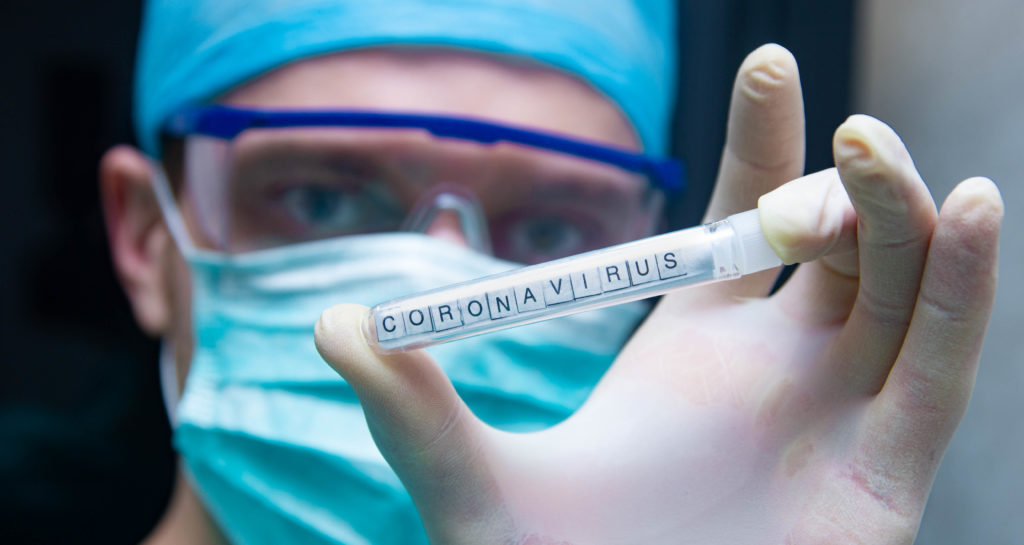SAFER – The Research Project that Looks at the Risk of Covid-19 in Hospital Healthcare Workers
5 Aug 2020 | Anne Marie Fogarty
| Share with

The novel nosocomial transmission of severe acute respiratory syndrome coronavirus 2 (SARS-CoV-2) commonly known as Covid-19, first appeared in Wuhan, China, causing a significant health risk globally.
Healthcare workers (HCWs) are placed in a high-risk position where they are not only susceptible to contracting COVID-19 themselves but also, contributing to transmission.1
The SAFER Study-COVID-19
A recent prospective cohort study 2 was conducted to evaluate the risks of HCWs developing and spreading COVID-19. The study involved two hundred hospital HCWs (from March 26 and April 8) in the ‘SARS-CoV-2 Acquisition in Frontline Healthcare Workers’ —Evaluation to inform Response (SAFER), in an acute National Health Service (NHS) trust located in London. SAFER is a £1.4m MRC (Medical Research Council) funded programme of research evaluating the risk of Covid-19 in hospital healthcare workers.
Regular testing via serology (blood tests), RT-PCR (real-time polymerase chain reaction – a genetic analysis) and nasopharyngeal swabs were carried out for the presence of SARS-CoV-2 infection within the HCWs, with surprising key findings below.
Key Points from the study
- Almost half (44%) of the 200 HCWs had evidence of SARS-CoV-2 infection at any time point.
- Almost half (45%) of the 181 HCWs were seropositive after one month (181 gave valid blood samples).
- One fifth (20%) of the181 HCWs seroconverted during the study.
- One quarter (25%) of the181 HCWs were already seropositive at study entry
- One fifth (21%) of the 200 HCWs tested positive for SARS-CoV-2 by RT-PCR in at least one swab.
- Interestingly, the median age of study participants was 34 years with a higher infection rate in participants younger than 30 years.
- The mean duration of detection of SARS-CoV-2 was 12·9 days.
- The most prolonged observed duration of SARS-CoV-2 detected was 29 days.
- With the 42 HCWs that ever tested positive for SARS-CoV-2, 20 (48%) reported symptoms within seven days of the positive test and 16 (38%) did not report any symptoms in the same time frame.
What happened at one-month follow up?
- The one-month follow-up results suggest a protective effect, correlating with the presence of spike protein-specific antibodies, on a subsequent infection within one month in high-risk settings.
- Of the 26 HCWs who tested positive by RT-PCR at the beginning of the study, 13 already had antibodies at baseline, indicating an anti-viral immune response, whereas the remaining 13 HCWs seroconverted by the 1-month follow-up.
- All 46 HCWs testing positive for SARS-CoV-2 by serology at enrolment remained positive at follow-up approximately after one month.
- Of the 36 HCWs who seroconverted during the study, 19 had SARS-CoV-2 RNA detected either at the time of enrolment or in the seven days after enrolment.
- Of the remaining 17 HCWs who seroconverted, ten were staff in whom RT-PCR detected no SARS-CoV-2 during the follow-up.
- Of the 99 HCWs who were seronegative at both time points, only one tested positive by RT-PCR.
Study Findings
In this cohort, most infections occurred between March 30 and April 5, 2020, the week when there was a peak in the number of new cases in London. Personal protective equipment (PPE) was introduced on April 1 for all patient interactions. The results showed that 25% of HCWs were already seropositive at the start of the research and that a further 20% of HCWs became seropositive within the first month into follow-up.
The study found that 44% (almost half) of HCWs show evidence of SARS-CoV-2 infection in a frontline setting which is higher than reported by others in the UK and worldwide.3 Evidence of infection in central London HCWs was more than double that of the London population.4
The findings emphasise the real need to implement policies to protect HCWs better and for regular asymptomatic HCW surveillance in hospital settings, for the second wave. Vaccines, when they become available, should initially be prioritised for HCWs.2
References
- Pan A, Liu L, Wang C et al. Association of public health interventions with the epidemiology of the COVID-19 outbreak in Wuhan, China. JAMA. 2020; 323: 1915-1923
- Catherine F Houlihan, Nina Vora, Thomas Byrne, Dan Lewer, Gavin Kelly, Judith Heaney et al. Pandemic peak SARS-CoV-2 infection and seroconversion rates in London frontline healthcare workers. Published: July 09, 2020DOI:https://doi.org/10.1016/S0140-6736(20)31484-7. Accessed on July 29, 2020. https://www.thelancet.com/journals/lancet/article/PIIS0140-6736(20)31484-7/fulltext#.XwngiLwuL1M.linkedin
- Lai X, Wang M, Qin C, et al. Coronavirus disease 2019 (COVID-2019) infection among health care workers and implications for prevention measures in a tertiary hospital in Wuhan, China. JAMA Netw Open. 2020; 3e209666
- Public Health England, Weekly coronavirus disease 2019 (COVID-19) surveillance report. https://assets.publishing.service.gov.uk/government/uploads/system/uploads/attachment_data/file/888254/COVID19_Epidemiological_Summary_w22_Final.pdf, May 27, 2020

05 Aug 2020 | Leave a comment
Share with socials